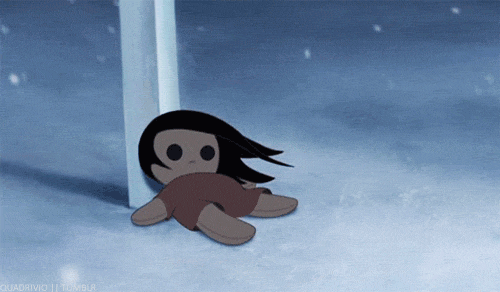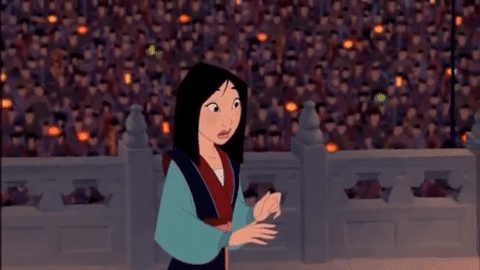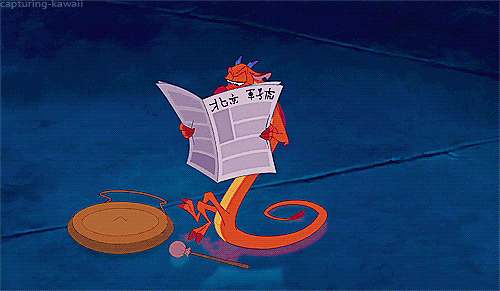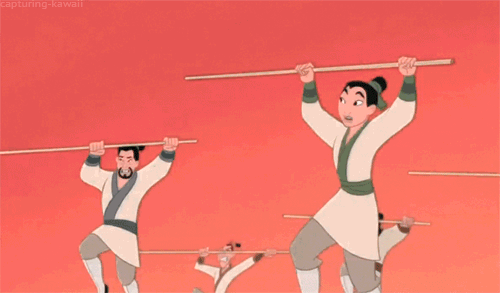Mulan (1998): The Movie Structure Archives
- Genre: Disney/Adventure/Coming of Age
- Writer(s): Rita Hsiao, Chris Sanders, Philip LaZebnik, Raymond Singer, and Eugenia Bostwick-Singer
- Director(s): Tony Bancroft and Barry Cook
Outline:
Contents
Act 1 (1%-25%)
- Hook: Scaling the Great Wall, the Huns announce their invasion to the Emperor of China.
- Mulan fails her examination with the Match Maker and worries she will never bring her family honor without giving up who she is.
- Inciting Event: The Emperor calls for an army to be raised to handle the Hun invasion, with each family in China sending one male recruit.
- Key Event: Mulan’s father is called to war against the Huns despite his injuries. When Mulan challenges him going, he tells her she needs to learn her place in society, implying she is not welcome as she is and confirming her earlier fears.
- 1st Plot Point: Mulan sneaks into the army in her father’s place to protect him after their dispute. She feels torn between what society expects of her as a woman and who she knows herself to be, and fears her family will never accept her.
Act 2 (25%-75%)
- The audience sees the Hun army once again, this time capturing two Chinese soldiers, executing one and sending the other to alert the Chinese army of their location, looking for a challenge.
- Mulan meets Mushu and gains him as a mentor. He gets her into trouble trying and failing to impersonate a man and she draws the ire of the rest of the army when she destroys their camp. She is vulnerable and doubts her decisions.
- Mulan begins training with the Chinese army but is harassed by her new comrades and struggles to meet the expectations of Shang, her commander.

- 1st Pinch Point: The Hun’s are planning their next move and find a doll from a nearby Chinese village where the Chinese army is stationed. They decide they must return it to its owner and slaughter the Chinese army and they set out.
- Midpoint: Mulan proves herself to her new comrades by using her brains to climb up the pole and retrieve the arrow at the top. She feels powerful and accepted and begins to excel at the tasks she struggled with before.
- Mushu engineers a fake letter from the Chinese army requesting Mulan’s unit meet them as urgent reinforcements, and they set out towards the capital city.
- 2nd Pinch Point: Mulan and her unit come upon a burnt out town close to the capital city and realize the entire Chinese army has been slaughtered by the Huns, along with Shang’s father. She has a moment of humanity with the doll of a dead child that reminds the audience that her true identity still separates her from her unit, still rooted in a family life they don’t have (that Shang just lost with his father’s death).

- 3rd Plot Point: While en route to the capital city Mulan’s unit is ambushed by the Huns. She uses her clever thinking to cause an avalanche, wiping out much of the Hun army, though she has to save Shang from that same avalanche. In the process of this she is wounded and passes out.
Act 3 (75%-100%)
- The remains of her unit discover she is a woman while treating her injuries, protocol is that they execute her but Shang refuses to, instead abandoning her in the mountains as repayment for saving his life previously. She feels defeated, that her fears of returning home unwanted have come true, and believes herself to have no value.
- Climax: Mulan sees remnants of the Hun army making their way towards the capital city and begins her race to warn Shang and her unit, still possessing loyalty to them.
- Climactic Moment: The leader of the Huns kidnaps the Emperor in the capitol city, and Mulan brings herself honor by using her intellect and recruiting her new allies to defeat the Hun’s leader and save the Emperor. She proves she is worthy of their respect and they accept her leadership in the critical moment.

- Resolution: Mulan returns a hero to her family, hoping that will be what it takes for them to accept her, only to find that her family is grateful for who she is and happy to have her back safely. Shang arrives at her family home and the beginning of a romance is implied, bringing the story full circle from her failure at the Match Maker. Mulan has found her place and understands her worth.
Characters:
Character 1: Mulan
- At the start of her arc, Mulan is vulnerable, coming of age in a society that does not welcome her intelligence or independence, and she wonders if she has any worth as an individual. She seeks refuge in her family but fails to find the understanding she is seeking from them, ultimately leaving home to make herself worthwhile by protecting her father with her own life.
- As her arc continues, Mulan struggles in a system that is intensely patriarchal, hiding herself as a man, literally hiding her true self. However, she proves her worth with her cleverness and intelligence and shows how the brute strength this system idealizes fails to meet its needs. As she progresses, she finds value in herself as her comrades accept her, though the block of her hidden identity continues to drive a wedge between them.
- At the lowest point of her arc Mulan has been abandoned by her comrades and has lost her self-worth. She feels her prophecy has been fulfilled, that she will return home unwanted, a disgrace, and unable to bring herself or her family honor. Until this point her self-worth has been based on the value others place on her, and she will have to work past this to overcome her knot.

- At the close of Mulan’s arc she enters a moment of crisis and knows that if she doesn’t assert her leadership and knowledge, the Emperor will be killed. This trust she has in her own instincts during this crisis earn her the loyalty of her comrades who had been unsure how to handle her revealed identity. Using her clever planning and her coordination with these allies, she overcomes the conflict and gains the ultimate approval, that of her Emperor. She returns home, and is told by her father she is loved as she is, that no matter how she returned home he would have been grateful. To complete this, a romantic interest is implied, and the audience can see that Mulan has come full circle. She has found value in herself and in doing so proved her worth to her society.
Character 2: Mushu
- When Mushu’s arc begins he is unwanted by his community, left to do menial tasks and to be harassed by his superiors. He sets out on his quest selfishly, hoping that if he can bring Mulan home as a hero he can earn his place back beside his peers. He is seeking community and acceptance but is doing so as a loner, out for his own gain.

- As this process continues, Mushu develops a relationship with both Mulan and the Lucky Cricket but continues to push Mulan into danger for his own gain. Despite this, the audience can see he is compelled to protect Mulan both emotionally and physically.
- Mushu’s lowest moment coincides with Mulan’s, as her failure to be accepted by her comrades also marks the likely failure of Mushu’s mission to make her a war hero. However, he overcomes this low moment almost immediately, as he reminds Mulan that they can always return home, and that he will always be there for her regardless of what happens. He has accepted returning home a failure because he has realized his relationship with Mulan is more important.
- Mushu’s highest point is a continuation of this acceptance, as he continues to trust and help Mulan and ultimately achieve his main goal. He gains the revered place he sought and also maintains his friendship with Mulan.
Character 3: Shang
- Shang’s arc is much more abbreviated because we see much less of his journey. However, what is shown suggests an arc that matches Mulan and Mushu’s thematically. Shang begins the story struggling to meet his father’s expectations. He is harsh and aggressive, trying to become what is wanted of him.
- As this arc progresses, Shang finds acceptance of his emotional self in Mulan, as she comforts him when he has been labeled a failure and later when he learns of his father’s death and struggles to mourn him. This blossoming relationship is shattered when Shang learns of Mulan’s hidden identity, though he shows growth in allowing her to live when the expectation is that he executes her.
- After this moment he reverts to the aggression he showed early on, however his arc is stunted as this quickly changes back to acceptance of Mulan. His arc is brought to a close with the implication of a romantic relationship between him and Mulan, and with the welcome he receives from her family. He has gained the family acceptance he sought, but his arc comes off somewhat flat as he doesn’t seem to have earned it.
Theme: What gives someone worth?
This theme is clearly shown through the main characters as they each struggle with different forms of acceptance and worth. Mulan struggles with what she sees as her strengths and with what society views as worthwhile in a woman while Mushu struggles with his demoted worth in the face of his peers. Shang adds to this theme to a lesser degree, but still seeks self-worth through the approval of patriarchal figures. These characters find self-worth at the end, Mulan’s being defined by her acceptance of her intelligence, Mushu’s being his decision to put others before himself, and Shang’s coming when he accepts the value of those he otherwise looked down on.
Because the theme ties in so tightly to the characters it is well mirrored in the plot as each moment of Mulan and Mushu’s journey shows them working through some issues of worth. With Shang’s struggles thrown in, this makes almost every scene somehow tied into the theme, something Disney seems to be consistently good at. While the sacrifice here may be a highly traditional plot structure, the benefit is the well-built theme and the tight pacing it provides, ultimately delivering a highly cohesive and enjoyable payoff at the end.

The movie uses a variety of symbols to reinforce its theme, with most of the symbols being closely tied into the relationships between specific characters. Mulan and her father have the blooming cherry blossoms and Shang has the helmet of his father. An additional symbol comes in the abandoned doll that both the Hun’s leader and Mulan find at different points in the story. The difference in how they handle this object provides a great contrast to their characters. The Hun leader views it as an opportunity for aggression and violence, the extreme of traditionally masculine qualities. Mulan, on the other hand, cradles it and provides it with something of a burial, her way of recognizing the loss of the child who owned it. Mulan sets herself apart by remembering the human cost of this war and by honoring it, not shying away from the vulnerability of grief (right after Shang is seen struggling to honor his father’s death).
Pacing:
Just as with Character and Theme, the pace in this movie is tight and expertly put together. There is a healthy ebb and flow thanks to healthy inserts of comedy alongside lower character moments, with the pacing reaching its high point at the start of Act 3 and being maintained until the Resolution.
Conclusion:
Mulan is an excellently structured film that takes its main character on a complete and compelling arc with great payoff and cohesive symbolism. While it follows traditional structure to a T, this makes it approachable to a younger audience while entertaining older viewers with how it handles dark and difficult themes. It’s refreshing to see a Disney movie handle issues of violence and patriarchy, however flawed the portrayal may be.


Leave a Reply